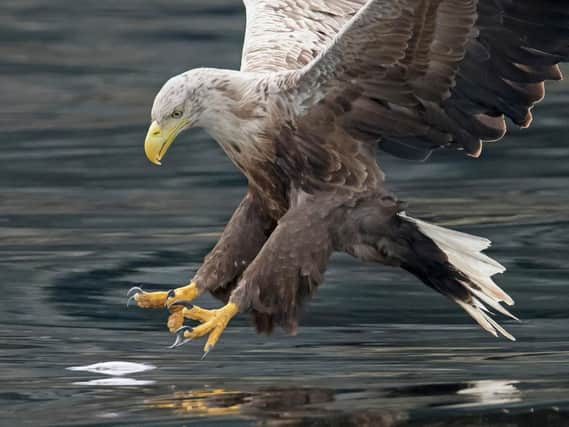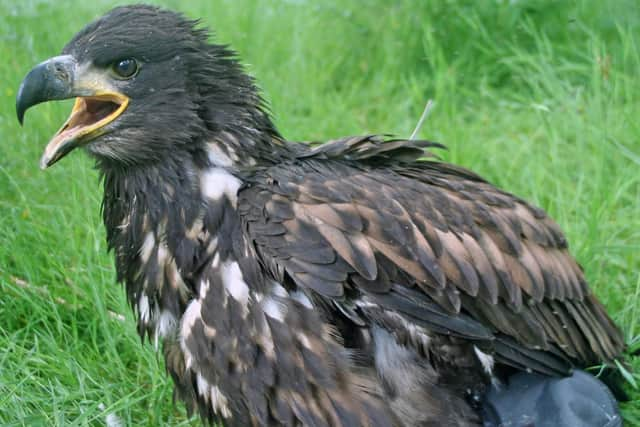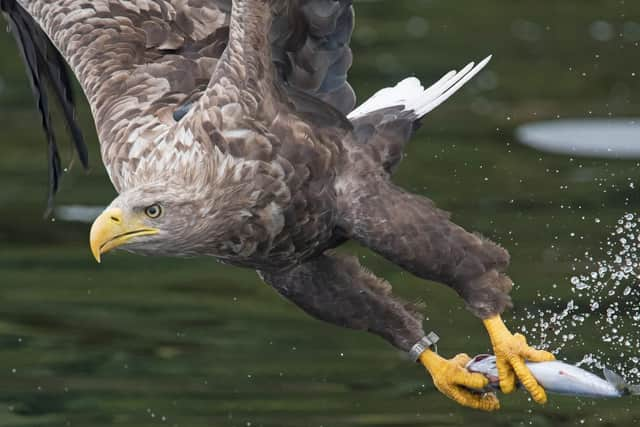240 years ago these birds were wiped out – now they are returning to the skies over the Solent


The birds, known as ‘flying barn doors’ because of their eight foot wing span, were once widespread across southern Britain.
However in the 18th century, persecution led to them being wiped out in the region.
Advertisement
Hide AdAdvertisement
Hide AdNow Government conservation agency Natural England has granted a licence to the Roy Dennis Wildlife Foundation and Forestry England for a five-year reintroduction scheme.


Up to 12 birds could be released each year, with as many as 60 reintroduced in total. The first release is set to take place this summer.
The birds will be brought under licence from nests in Scotland and raised for release in woodland on the Isle of Wight.
It was chosen for its central location along the south coast, which provides a good habitat for the coast-favouring birds.


Advertisement
Hide AdAdvertisement
Hide AdThe experts behind the release said breeding is not expected to start until 2024, with the eagles closely monitored using satellite tracking.
The scheme signals the return of white-tailed eagles to a region from which they have been absent for almost 240 years, with the last known breeding place recorded at Culver Cliff on the Isle of Wight in 1780.
By the early 20th century white-tailed eagles, Britain's biggest bird of prey, were extinct across the UK, but over the past 40 years have been successfully reintroduced to Scotland and Ireland.
It is hoped the new project could boost the local economy after a similar scheme on the Isle of Mull was found to contribute up to £5 million a year from ecotourism.
Advertisement
Hide AdAdvertisement
Hide AdReintroductions of white-tailed eagles have faced controversy over concerns they could prey on lambs, and the National Sheep Association has criticised the decision.
Its chief executive Phil Stocker said the plan included no agreement over legally binding actions or compensation to people whose livelihoods are affected by the eagles.
‘Make no mistake these birds are a top of the food chain predator whose behaviour will adapt relating to food needs and availability’ he said.
‘With wingspans reaching six feet, we will see them taking livestock and other domestic animals and we will have consciously taken a decision that contradicts our interests in improving animal welfare and avoiding suffering.’
Advertisement
Hide AdAdvertisement
Hide AdBut Natural England's director of operations James Diamond said: ‘There is no evidence of this becoming a problem where the eagles live alongside lowland sheep farming in Europe.
‘However, we will ensure that the applicant puts in place clear routes to identify and manage any unexpected issues that might arise.’
Debbie Tann, chief executive of Hampshire and Isle of Wight Wildlife Trust, added: ‘This could be a great leap towards a much wilder future for the Island.
‘The sight of this iconic eagle around the southern English coast cannot fail to inspire people and encourage the kind of love for wildlife which will be vital if we are going to tip the balance in favour of nature’s recovery.
Advertisement
Hide AdAdvertisement
Hide Ad‘We have been clear that this programme must help, not hinder, our area’s existing wonderful wildlife and we have been impressed with the work undertaken by the project team to date.
‘We look forward to working together to ensure that this initiative brings real and tangible benefits for the Island’s wildlife and local communities.’
Roy Dennis, founder of The Roy Dennis Wildlife Foundation said: ‘White-tailed eagles were once a common sight in England and southern Europe but were lost centuries ago.
‘I can remember as a lad walking along Culver Cliffs to see where the eagles had once lived.
Advertisement
Hide AdAdvertisement
Hide Ad‘It is incredible now to be able to play a part in returning these birds back to their home.’
Bruce Rothnie, South Forest management director at Forestry England, added: ‘Our woodlands provide a haven for wildlife and we hope that they will become home to these incredible birds on the Isle of Wight.’
